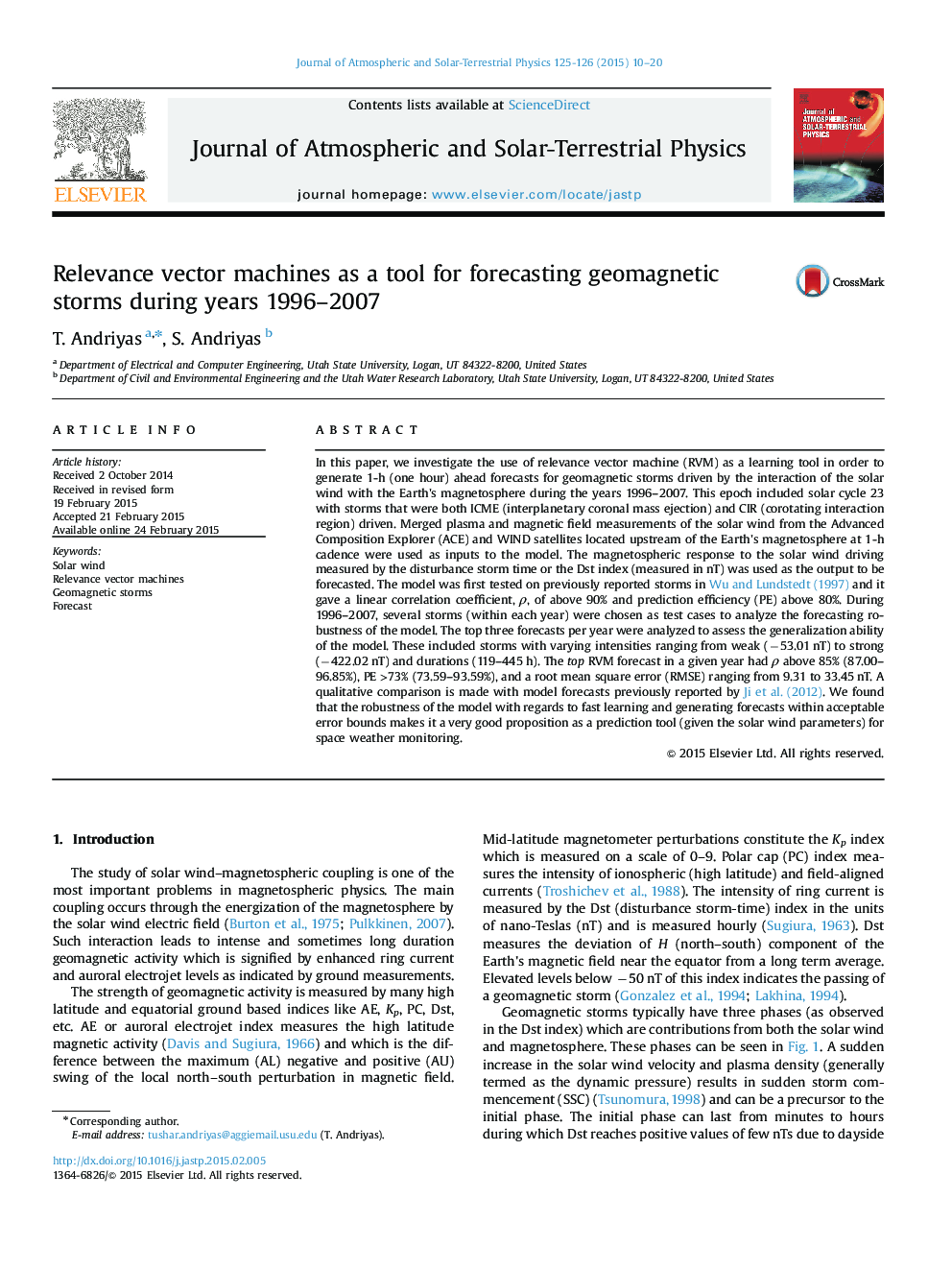| کد مقاله | کد نشریه | سال انتشار | مقاله انگلیسی | نسخه تمام متن |
|---|---|---|---|---|
| 1776489 | 1523617 | 2015 | 11 صفحه PDF | دانلود رایگان |
• We generate 1 h ahead forecasts for geomagnetic storms.
• The use of relevance vector machine (RVM) as a learning tool is proposed.
• We got high goodness of fit numbers for storms during 1996–2007.
• Fast learning with good generalization makes RVM a potential forecasting tool.
In this paper, we investigate the use of relevance vector machine (RVM) as a learning tool in order to generate 1-h (one hour) ahead forecasts for geomagnetic storms driven by the interaction of the solar wind with the Earth's magnetosphere during the years 1996–2007. This epoch included solar cycle 23 with storms that were both ICME (interplanetary coronal mass ejection) and CIR (corotating interaction region) driven. Merged plasma and magnetic field measurements of the solar wind from the Advanced Composition Explorer (ACE) and WIND satellites located upstream of the Earth's magnetosphere at 1-h cadence were used as inputs to the model. The magnetospheric response to the solar wind driving measured by the disturbance storm time or the Dst index (measured in nT) was used as the output to be forecasted. The model was first tested on previously reported storms in Wu and Lundstedt (1997) and it gave a linear correlation coefficient, ρ, of above 90% and prediction efficiency (PE) above 80%. During 1996–2007, several storms (within each year) were chosen as test cases to analyze the forecasting robustness of the model. The top three forecasts per year were analyzed to assess the generalization ability of the model. These included storms with varying intensities ranging from weak (−53.01 nT) to strong (−422.02 nT) and durations (119–445 h). The top RVM forecast in a given year had ρ above 85% (87.00–96.85%), PE >73%>73% (73.59–93.59%), and a root mean square error (RMSE) ranging from 9.31 to 33.45 nT. A qualitative comparison is made with model forecasts previously reported by Ji et al. (2012). We found that the robustness of the model with regards to fast learning and generating forecasts within acceptable error bounds makes it a very good proposition as a prediction tool (given the solar wind parameters) for space weather monitoring.
Journal: Journal of Atmospheric and Solar-Terrestrial Physics - Volumes 125–126, April 2015, Pages 10–20
